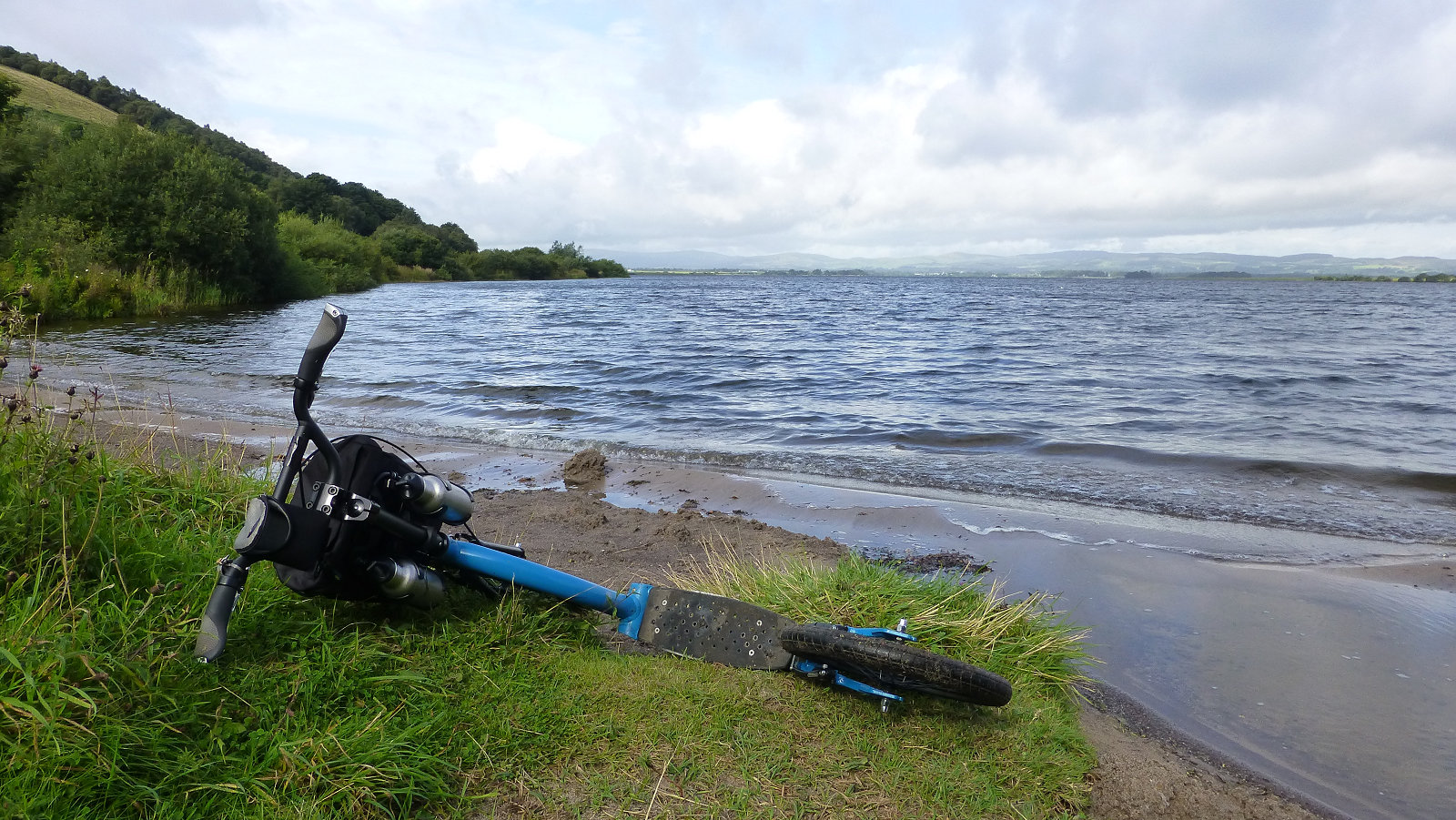Many different types of open water including lakes, lochs, reservoirs and even small ponds are often worthy destinations for sand collecting. Even the humblest of ponds may have a small beach where the action of wind and wave have laid down particles of sand, silt and clay. It might not be as well graded as coastal beaches but sand and similar materials can often be collected.
The composition of these beaches can vary considerably and is very much dependant of the local geology and the type and quantity of materials carried in by the rivers and streams that feed the lake, pond or whatever. From experience in my local area, the south east of Scotland, actual sand seems to be quite scarce, with fine gravel, silt and clay being dominant. For some this might be an issue but I also collect clay samples so almost always come away with a sample of something or other.
Other than beaches along the shore, collectors should also pay particular attention to where rivers and streams join the lake. During floods rivers and streams can carry a considerable amount of sediment and when the river enters an open body of water such as a lake, the flow rate slows and the river can no longer hold this sediment in suspension. It then settles onto the lake floor, sometimes forming geological features known as alluvial fans, which can be quite extensive. Beds of sand, fine gravel, silt and clay can often be found at such locations.
Of course, some open bodies of water lack any obvious locations where samples might be collected, no beaches, no alluvial fans. Many upland lakes and tarns are like this almost devoid of fine materials resembling sand, at least visible to the collector. But all is not lost, you may still be able to gather some sand, or at the very least some silt from which sand might be derived. You can do this by sand fishing.
Sand fishing, which can also be used quite successfully at the coast or along rivers, is essentially a form of micro-dredging, but uses a small weighted collecting container attached to a line to dredge sand or sediment from the lake, sea or river bed. The container is thrown by hand, or cast if using a fishing rod, into the water and allowed to sink. It is then retrieved and hopefully, sand will have been gathered in the container. In practice, sand fishing is a bit hit and miss, as you never know what will turn up, or indeed, if there’s anything there in the first place.
Copyright ©2020 Gary Buckham. All rights reserved.


